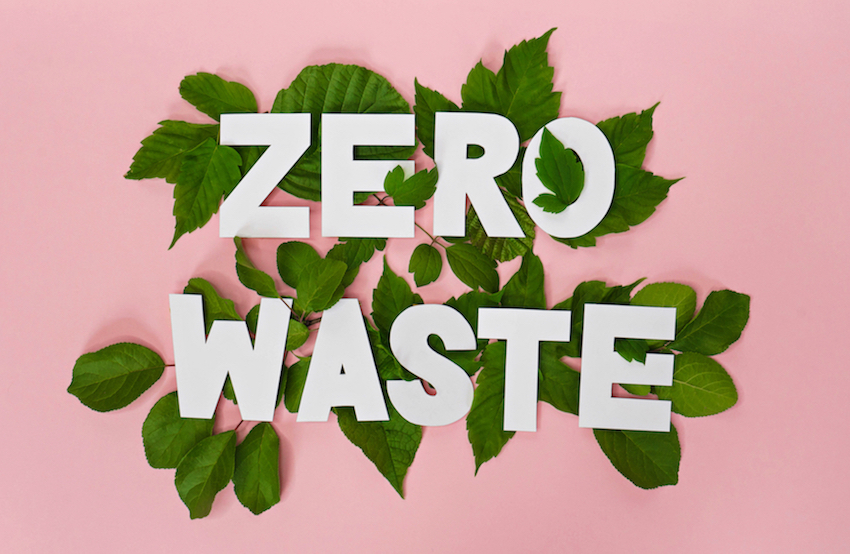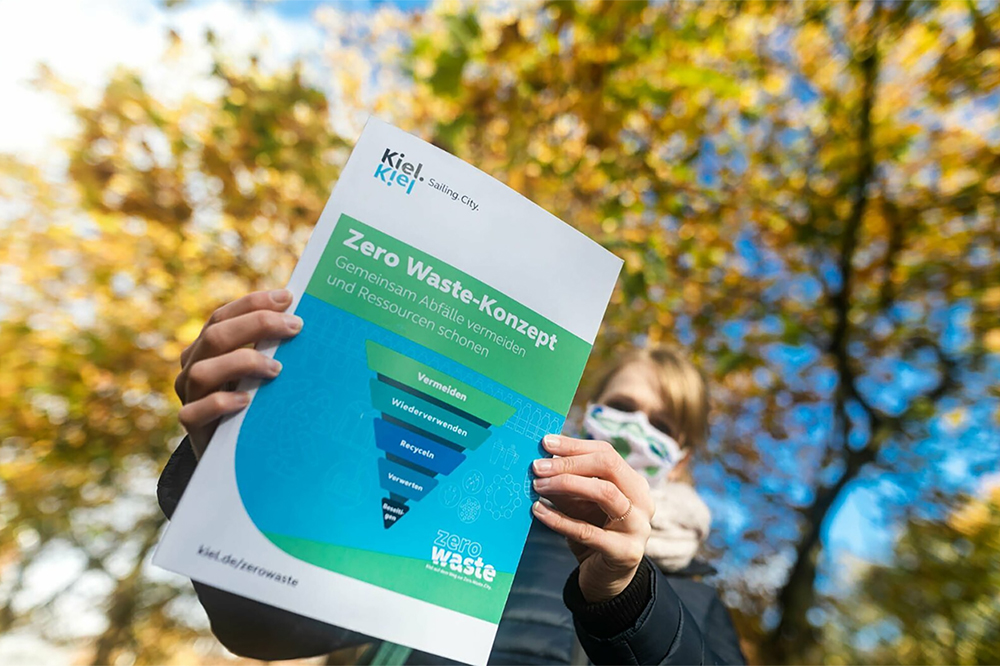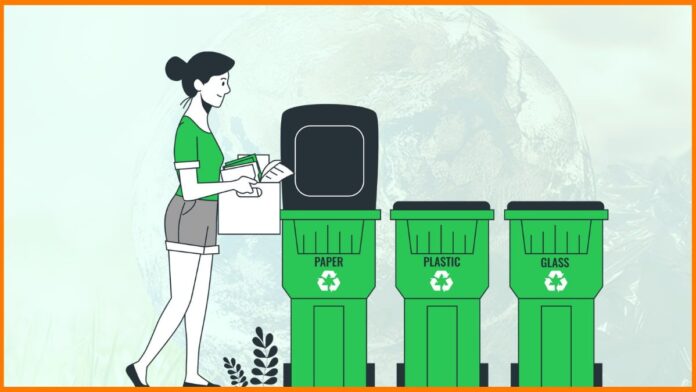Businesses can implement a zero waste strategy to help reduce their environmental impact and save money. Here are some tips on how to get started.
The how to start a zero waste business is an article that will teach you how to implement a zero waste strategy for your business.
If you haven’t heard, trash is a major issue in the United States. According to current estimates, total municipal solid waste production is approximately 267 million tons per year, with just 67 million tons recycled and 27 million tons composted.
However, the country is becoming more aware of its trash production. Businesses worldwide are searching for methods to minimize waste as a result of new laws and state-wide programs that put a greater focus on producer responsibility. At the same time, assisting them in becoming more efficient, responsible, and compliant.
To achieve this, several companies are experimenting with zero-waste ideas. It is regarded as a potential alternative to traditional waste management because of its strong connections to the circular economy. Its central goal is to rethink how we think about waste, using a set of hierarchical principles to rethink, reduce, reuse, recycle, recover, and generally manage our increasing heaps of trash.
How to make your company’s zero-waste plan a reality

However, how can your company go about implementing a zero-waste strategy? And what sort of advantages may it provide? We’ll look at where to start your zero-waste journey and why companies all around the world should be focused on the zero-waste hierarchy.
1. Evaluate, investigate, and participate
The first stage in any waste management strategy should always be to evaluate and analyse your current production. Taking a long, hard look at your waste production enables you to discover places to improve and highlight inefficient habits or procedures when implementing a zero-waste strategy.
It may be necessary to hire waste management experts at this point, depending on the size and scope of your company. These specialists can analyze and evaluate your trash production in depth, providing comprehensive data on the quantities, frequency, and kinds of garbage generated, as well as how it is handled once it leaves your premises (recycled, landfilled).
Alternatively, you may handle this procedure on your own. If this is your chosen method, you should form a specialized trash management team or delegate the task to an individual. It’s critical that your evaluations are thorough, taking into consideration waste both at the production level and in your offices, as well as tracking and documenting how trash is disposed of. Be aware that this will very certainly need some dumpster diving in order to compile a complete picture of what you trash, so be prepared to get your hands dirty.
In any case, none of this would be possible without the assistance of your workers, and including them from the start of your company’s zero-waste journey is critical. Make sure to communicate your new vision with management and workers, and talk about the advantages for both the business and the rest of the world. Also, ask for personal experiences with waste, as well as suggestions on how to minimize it. A zero waste plan for a company is a collaborative endeavor, and the more people on board, the more effective it will be.
2. Redesign and rethink
You may create a strategy to produce less trash after you have a grasp on your current waste production. To reduce waste at its source, the first step is to evaluate and restructure your current processes and practices. This may range from improving manufacturing processes to utilizing fewer raw materials to just eliminating single-use plastics from the workplace kitchen.
Not only will you be able to reduce waste production by rethinking and rebuilding waste-generating systems, but you will also be able to develop more efficient processes and practices that have the potential to save money in the long run. Every step of trash production should be investigated and redesigned if necessary. It’s important to consider all available alternatives, whether it’s spending the effort to create cardboard mailers that use less card or redesigning your most popular goods to incorporate recycled materials.
Providing reusable cups with a water cooler, for example, reduces plastic waste while also saving money as compared to a fridge filled with single-use water. The same may be said for replacing polluting components in your goods, such as petroleum-based plastics, with sustainable and less harmful materials (like bioplastics).
3. Reducing, reusing, and recycling
Any components that are difficult to include into your redesign are not considered “waste.” The next stage is to figure out how to reduce, reuse, and recycle them in that sequence. One of the most difficult problems confronting the zero-waste movement is changing our disposable mindset, and after you’ve tackled the rethink and redesign stages, it’s time to shift so-called trash up the hierarchy.
To return to our previous example, single-use plastics are often 100% recyclable. However, limiting their usage as much as possible is the preferable method, since it allows you to eliminate waste at the source rather of having to “manage” it afterwards. And here’s the key point: requiring the “best use” of materials in accordance with the zero-waste hierarchy guarantees that we regard all of our resources more highly.
Any materials or goods that can’t be reduced or repurposed must be responsibly recycled. This entails properly classifying items on your premises, providing clearly labeled containers and signs to assist employees in doing so, and holding frequent education sessions and updates on current best practices.
Once your waste has been collected, tracking it to the appropriate facility can be beneficial, providing concrete data that can be used in a consumer-facing campaign to highlight your sustainability credentials—an important metric that an increasing number of consumers are looking for when purchasing products or services.
Your approach should be improved and refined

None of these stages to a successful zero waste strategy are carved in stone, and you should strive to enhance and modify your strategies on a regular basis. Redesigning current processes and practices, for example, may result in the creation of new waste streams or inefficiencies, which should be addressed when you return to the top of the zero-waste hierarchy.
The overall goal is to encourage the most efficient use of resources at all times. You should try to move materials up the hierarchy as much as possible. You’ll be working toward more effective waste management every day if you have a thorough strategy that can be updated and improved as you move along your zero-waste path.
Finally, keep in mind that the “zero” in zero waste refers to an idealistic objective. It’s conceivable that reaching absolute zero may never be feasible, but that doesn’t imply we shouldn’t try. As Anne-Marie Bonneau, a zero-waste chef, puts it:
“We don’t need a small group of individuals who are great at zero waste. We need millions of individuals doing things in their own unique way.
The zero waste management examples is a strategy that companies and organizations can implement to reduce the amount of waste they create. This will allow them to be more sustainable and environmentally friendly.
Frequently Asked Questions
How can a business make Zero Waste?
A business can make zero waste by using a variety of methods to reduce, reuse, and recycle.
Which initiatives can help become a Zero Waste to landfill Organisation?
There are many ways to become a Zero Waste to landfill Organisation.






